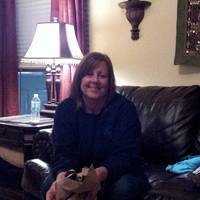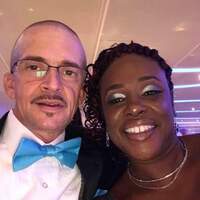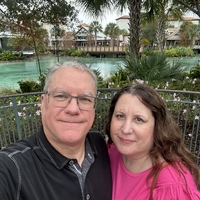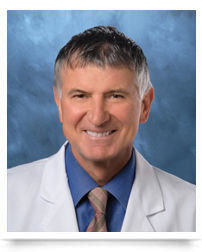Heart Valve Re-Operations: What Should Patients Know?
Written By: Adam Pick, Patient Advocate, Author & Website Founder
Medical Expert: Nimesh Desai, MD, Director of the Aorta Center, Penn Medicine Heart and Vascular Center
Page last updated: January 16, 2024
Heart valve re-operation is a “hot topic” among patients at HeartValveSurgery.com. It can also be a confusing topic. Patients are struggling to understand their best option as traditional surgical approaches and catheter-based re-interventions are now available.
To learn more, we interviewed Dr. Nimesh Desai. So you know, Dr. Desai is the Director of the Aorta Center at Penn Medicine Heart and Vascular Center in Philadelphia, Pennsylvania. During his career, Dr. Desai has performed 4,000+ cardiac procedures, of which 2,000+ operations involved some form of heart valve replacement or heart valve repair.
Key Learnings About Heart Valve Re-Operations
Here are the key learnings I jotted down during my interview with Dr. Desai:
- Dr. Desai knew he wanted to become a cardiac surgeon since elementary school. After researching the human body for a class project, he became fascinated by the idea of fixing and transplanting hearts.
- Specific to valvular therapy, Dr. Desai decided to focus on the treatment of the aortic, mitral, tricuspid and pulmonary valves given their design, their uniqueness and their complexity. “It’s a puzzle to put valves back together again when something goes wrong with them,” stated Dr. Desai.
- During his career, Dr. Desai has learned that no single therapy is necessarily “permanent”. For this reason, heart valve re-operation(s) can be part of the lifetime management of valvulard disorders.
- It is important to note that heart valve re-operations are “more complex” than first-time procedures. Re-operations are more complex due to (i) scar tissue and (ii) the removal of previous heart valve replacements and/or heart valve repair devices without damaging the heart.
- According to Dr. Desai, the team at Penn Medicine has developed many practices and techniques to mitigate the risks of heart valve re-operations given the added complexity of a second (or third) re-intervention.
- Dr. Desai is now using catheter-based and/or minimally-invasive techniques to avoid full, open-heart valve re-operations. Dr. Desai states, “It’s been an amazing feat of technology to be able to actually take heart valves that are the size of a golf ball and miniaturize them down onto a catheter that we actually slide inside your arteries and up into your heart. In doing so, we can extend the life of a surgical operation by basically putting new leaflets or new moving components inside an old heart valve that we’ve already repaired or replaced.”
- The utility of non-invasive, catheter-based therapies for re-operations are not available to all patients. Patients may not be eligible for catheter-based therapies (i) if their initial valve replacement was too small or (ii) if the patient has developed an aortic aneurysm.
- For all patients needing an initial, heart valve procedure, Dr. Desai and the Penn Medicine team are strategically thinking about the possibility of a re-operation in the future. Dr. Desai states, “Every operation we do today, the first time around, we are thinking about what we may need to do in the future and how to set it up for either a transcatheter solution, another re-operation, or to try to use procedures that may not fail like a Ross Procedure.”
- At Penn Medicine, about 50% of all heart valve re-operations are being performed using transcatheter, non-invasive procedures.
- Given the evolution of new techniques and medical devices, Dr. Desai believes that heart valve re-operations should be very safe at a cardiac center that specializes in heart valve therapy.
- Dr. Desai’s number one piece of advice for patients is to get medical care from a very experienced team – outstanding cardiologists, anesthesiologists, imaging specialists, interventional cardiologists, cardiac surgeons, and critical care.
Thanks Dr. Desai & Penn Medicine!
Many thanks to Dr. Desai for taking time away from his very busy practice to share these fantastic insights with our patient community. In addition, I’d like to thank Penn Medicine for taking care of so many patients in our community.
Related Articles:
Keep on tickin!
Adam
P.S. For the hearing impaired members of our community, I posted a written transcript of this video interview below.
Video Transcript:
Adam: Hi, everybody. It’s Adam with heartvalvesurgery.com, and today we’re learning all about heart valve reoperations. I’m thrilled to be joined by Dr. Nimesh Desai who’s a leading heart surgeon at Penn Medicine Heart and Vascular Center in Philadelphia, Pennsylvania. During his fantastic career, Dr. Desai has performed over 4,000 cardiac procedures, of which 2,000 involved some form of heart valve replacement or heart valve repair. Dr. Desai, thanks so much for being with us today. We’re going to get to the topic all about heart valve reoperations, but first, why did you want to become a cardiac surgeon?
Dr. Desai: Adam, that’s a great question. When I was in grade school, we had an assignment to do a project on a body organ. I don’t remember if I chose the heart or not or whether it was chosen for me, but I remember getting that topic and going to the library and taking books out about hearts, and I read about open-heart surgery and how you could do bypasses or fix valves or even replace an entire heart with a transplant, and I was – I think I was sold at that point that this is what I was going to do with my life.
Adam: Dr. Desai, you mentioned heart valves in your research project in elementary school. You’ve gone on now to become a leading cardiac surgeon at Penn Medicine. What is it about valve therapy, repairs, and replacements that is so attractive to you?
Dr. Desai: The heart valve is one of the unique structures in the human body. We have four of them in our heart, and they’re all very different. Each one of them is a custom design exactly for the purpose that it serves, and it’s really a remarkable puzzle to try and put them back together again when something goes wrong with them because there’s so many moving elements and so much uniqueness to every single valve and every single person’s valve. It’s a real measure of skill to be able to put those back together again.
Adam: Dr. Desai, let’s get to the topic at hand, which is heart valve reoperations. Curious to know, are heart valve reoperations common to be performed at Penn Medicine?
Dr. Desai: Heart valves are an amazing thing, and they tend to break down at different points in life depending on what the person’s risk factors are. Certain heart valve problems occur in childhood or in early adolescence, and other heart valve problems don’t develop until patients get significantly older. One of the things that we have learned is that none of the therapies that we have for heart valves is necessarily permanent. Our own bodies can grow or change or the materials that artificial heart valve are made out of can break down over time, so occasionally these things need to be re-replaced. A second operation for a heart valve replacement or a repair is fundamentally more complicated than the originally surgery would be, and it’s something that requires a lot more expertise than traditional open-heart surgery the first time around would, so it’s something that we tend to see a lot of that gets referred into us from all over the country.
Adam: Dr. Desai, you just mentioned how reoperations can be more complex than that first-time intervention. Can you help patients understand why is heart valve reoperation more complex?
Dr. Desai: Once someone has open-heart surgery, typically once the body heals, we form scar. That’s our normal way of healing, whether it’s a cut in the skin or an incision anywhere in the body. When scar forms around the heart, that can make the reentry or going back into someone’s chest a little bit more difficult and a little bit more complicated, so doing that safely requires a lot of expertise and a lot of patience sometimes because it can be a really, really tedious and meticulous operation to go back in again. Additionally, sometimes taking an old prosthetic out or taking out previous repairs that are inside the heart can be complicated as well, and it’s really important to be able to take those out without damaging any of the adjacent cardiac structures because everything in the heart is connected, and we don’t want to injure one thing by trying to take something else out.
Adam: Dr. Desai, you mentioned how this is more complex. I’m curious to know, does that mean there’s additional risk for patients, and if so, how do you and your team at Penn Medicine manage that risk?
Dr. Desai: Traditionally, we did think there was additional risk with going back in again to do further cardiac surgery. As techniques have evolved, we’ve developed a lot of different things that we do both before the surgery and during the surgery to make it safer to go back in again, and so it all coms down to a lot of planning. That’s one side of things. That other things that we’ve done is we’ve really moved away from having to do another big open operation if we can. If there are opportunities for us to rescue a previous repair with a catheter-based technique, we’ll use that, or some other minimally invasive techniques so we don’t have to do a full open surgery again.
Adam: Dr. Desai, I’m sure the patients out there are hearing about these non-invasive or less invasive techniques like the transcatheter approaches for reoperations. Can you talk about that a little bit more?
Dr. Desai: It’s been an amazing feat of technology to be able to actually take heart valves that are the size of a golf ball or so and miniaturize them down onto a catheter that we actually slide inside your arteries and up into your heart. In doing so, we can extend the life of a surgical operation by basically putting new leaflets or new moving components inside an old heart valve that we’ve already repaired or replaced. There are limitations to that, and in fact, we’re learning that sometimes if the heart valves are not placed in the exact right orientation or are too small that some of these transcatheter bailouts are not possible. A lot of this comes down to looking at what the original operation you do is and how you plan it, so every operation we do today, the first time around, we are thinking about what we may need to do in the future and how to set it up for either a transcatheter solution, another reoperation, or to try to use procedures that don’t – that have the ability to never need a reoperation like a Ross operation.
Adam: Dr. Desai, this is fascinating. It’s so important for our patient community to hear that you at Penn Medicine are thinking about the long-term care and the long-term planning of valvular disease. Got to ask you a big question. Do you know offhand about what percent of your valve reoperations are being done using transcatheter devices?
Dr. Desai: The technology’s really evolving, and today, we can treat nearly half of all of the valves that have failed that we have to reintervene on using some form of catheter technique. A little bit easier on the aortic valve side. The mitral valve area’s still evolving, but we have ways of re-repairing those valves if we need to or putting another bioprosthetic valve inside what’s already in there. The biggest barriers typically to being able to do it with a catheter solution are that the original – at the original surgery, the valve that was put in was either too small or that the patient has developed other conditions like an aortic aneurysm that need to be treated with surgery on top of the valve re-replacement.
Adam: Dr. Desai, I’m sure a lot of patients are wondering what are the outcomes of your patients who have had a heart valve reoperation either done surgically or transcatheter.
Dr. Desai: That’s a great question. As technology and techniques have evolved, I think we’re at the point now where we can say that the reintervention for a valve, whether it’s done open or with a transcatheter technique, carries nearly the same risk as the original surgery does, and these surgeries are very safe. In particular, if we can manage them with a transcatheter technique, patients can sometimes even go home the next day with no incision, and if they need reintervention with open surgery, we still expect them to rebound with the same speed and vigor as they did after their first surgery.
Adam: Dr. Desai, I’ve got to ask you this big question while I’ve got you on the line. What is the number one piece of advice that you have for patients who may need a heart valve reoperation?
Dr. Desai: I think the most important thing from a patient’s perspective is to make sure that they get into the hands of a really experienced team. These operations can be complicated, and there are a lot of different options to reintervene on valves these days, and so you really need a team that has outstanding cardiologists, imaging specialists, interventional cardiologists, cardiac surgeons, anesthesia, critical care, the whole team.
Adam: Dr. Desai, thanks so much for taking time away from your very busy practice at Penn Medicine and sharing all these wonderful insights about heart valve reoperations. As we always say here, keep on ticking.
Dr. Desai: Thank you, Adam. It was a privilege talking to you and the whole community today.




